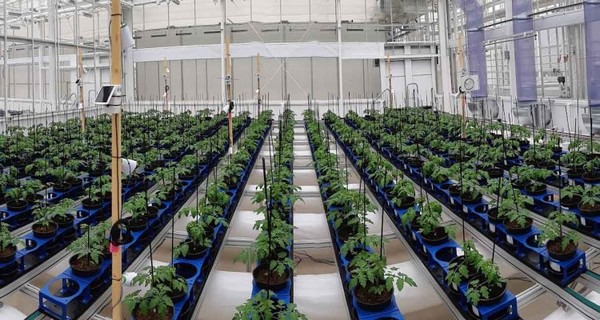With the completion of NPEC at the end of this month, plant research enters a new era. The era of automation and a lot of data. NPEC stands for Netherlands Plant Eco-phenotyping Centre. The focus here is not the plant's genetic baggage – its genotype – but its outward appearance or phenotype. The research entails measuring aspects of the plant's appearance and the influence of the environment.
And what NPEC offers in terms of technology is downright phenomenal, says professor of Genetics Mark Aarts, chair of the Board of NPEC. "Genetics is no longer a limitation for research these days. Nowadays, we can determine genotypes very quickly and cheaply. What we need now is to understand what those DNA sequences do. Why is lettuce with this genotype different from lettuce with that genotype? How do the environment and climate influence that? NPEC offers the facilities to measure all that. I am a geneticist, and for me, the possibilities this opens up are fantastic. Really super."

Of course, scientists have always measured how crops react to a certain treatment, disease, or stress, says Rick van de Zedde, the project leader for the development and construction of NPEC in Wageningen. "But until now, these sorts of experiments required a lot of manual work. The scale of testing was limited by the number of plants a person could analyze in a day. Ph.D. students, therefore, spend weeks on intensive manual work, whereas they have better things to do with their valuable time. NPEC gives researchers equipment with which they can conduct standardized analyses of plants on a large scale and build datasets. All with the help of robots, sensors, automation, and camera systems; in the greenhouse and climate cells as well as in the field. This is a global trend."
Photo model
NPEC is a collaboration between WUR and Utrecht University (see inset: Ecotron). The facilities are spread across both campuses. There is not much activity yet in the NPEC greenhouse behind Radix, where Van de Zedde proudly shows off the equipment. There are two sections to the greenhouse. In one section, the plants are moved on conveyor belts towards cabinets full of measuring systems. In the other section, the plants stand still, and the measuring systems move. In both cases, the measuring is fully automated. "'Here we measure the architecture of the plant,"' says Van de Zedde, pointing to a large white box. In the cabinet, the plants are captured from all sides by 15 cameras as if they were photo models. "'A 3D image of the plant is then constructed from these images. We developed the software for doing that ourselves. This is a Wageningen invention, which you won't find anywhere else in the world."'
